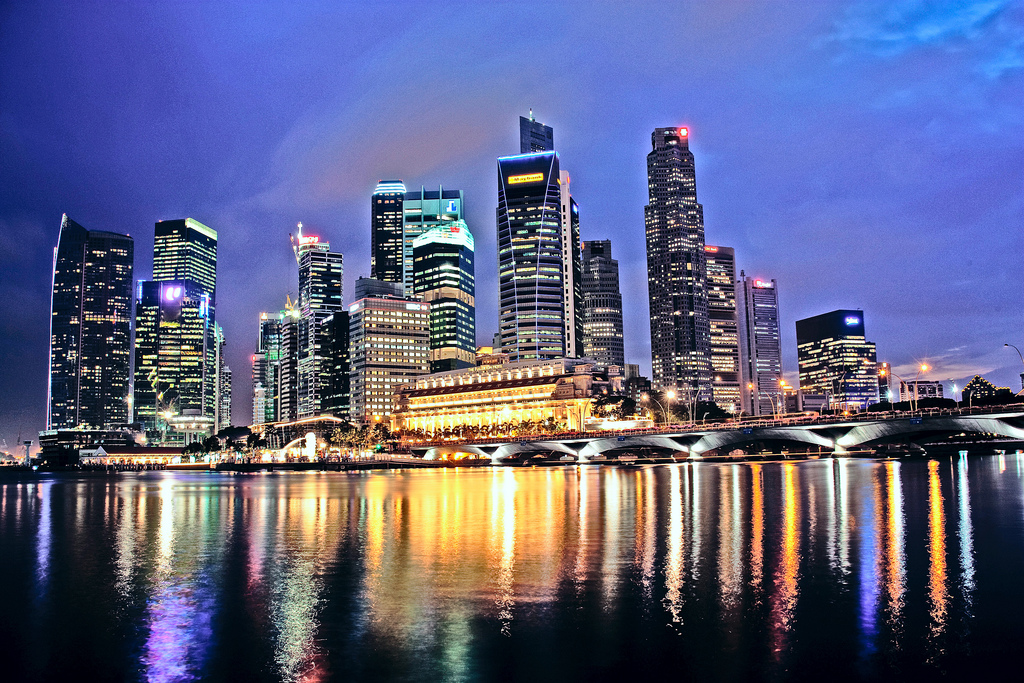
Country insight: Singapore industry prepares for transformation
Singapore is so small that you could walk from coast to coast in less than an hour, with a coffee break halfway into your stroll.
Located in southeast Asia, at the southern edge of Malaysia, Singapore island has a total land area of around 700 square kilometres.
And its population is tiny too, numbering well under 6 million, 75 per cent of whom are of Chinese background, 13 per cent Malay, and 10 per cent Indian, with “others” accounting for the rest.
Yet, despite being tiny in so many ways, Singapore is a very powerful country and economy on the world stage.
It doesn’t go in for politics much beyond ensuring stability so it can do business – and it does business extremely effectively.
The nominal gross domestic product of Singapore for 2018 is forecast to be way more than $300 billion, which when divided by its 6 million population is at least $50,000 each.
This means that the average Singapore resident is the 10th richest national in the world.
There are many sectors of the economy one could highlight to illustrate how Singapore excels, most famous perhaps is its financial sector.
But this website is interested in industry and industrial technology – specifically robotics and automation technologies, as often seen in the manufacturing and logistics sectors.
And in these sectors, you might not expect to find much activity in Singapore since its financial sector is huge that you imagine it employing virtually everyone, leaving very few to work in factories and warehouses.
Singapore is considered a global financial hub, on a par with Hong Kong, Dubai, Tokyo, London, Frankfurt and New York.
But, surprisingly perhaps, according to the Singapore government’s Department of Statistics, the financial sector does not account for the largest share of GDP, as show in the list below.
Share of Singapore GDP by industry
- Manufacturing :: 19.2 per cent
- Wholesale and retail trade :: 17.6 per cent
- Business services :: 14.8 per cent
- Finance and insurance :: 13.3 per cent
- Construction :: 4.3 per cent
- Transportation and storage :: 7.2 per cent
So, it’s manufacturing that is the biggest part of the Singapore economy, which may surprise some people outside the country who regularly see headlines about the country’s financial sector.
If total GDP is $300 billion, then manufacturing’s 20 per cent share would equate to around $60 billion.
Not only is manufacturing the largest sector, it’s also growing quite fast. Last week, Singapore’s Ministry of Trade and Industry released figures that show the economy is growing at more than 4 per cent a year, but manufacturing is growing at a rate of 10 per cent, as reported in the Financial Times.
Moreover, Singapore has recently shown what appears to be a newly found enthusiasm for robotics and automation.
Robotics and Automation News has reported stories recently about large, global industrial companies which either heavily use automation in their operations or actually manufacture robots themselves have been setting up operations and agreeing partnerships in Singapore.
Here are some interesting developments from recent months that we have covered:
- ABB establishes global digital solutions centre in Singapore
- Singapore establishes new robotics and automation startup incubator
- Hanwha partners with PBA Group to open collaborative robot production facility in Singapore
- Pratt & Whitney ups production at advanced factory in Singapore
- HP opens first advanced manufacturing centre in Singapore
- Universal Robots puts on a show in Singapore for people interested in its technologies
It is against this dynamic background that one of the world’s largest trade show companies is launching a new event in Singapore aimed at industrial companies.
Deutsche Messe is the German company behind the annual Hannover Messe and CeMAT shows, both of which take place next week.
The venue for those shows is in Germany – Hannover Fairgrounds – and it takes up an area almost the size of Singapore.
Now, Deutsche Messe has partnered with a Singapore company called Singex to organise the Industrial Transformation Asia-Pacific event, scheduled for 16th to 18th October this year.
The venue, Singapore Expo Convention and Exhibition Centre, is owned by Singex, and approximately 150 exhibiting companies and 5,000 visitors, as well as 25 speakers and 500 participants, are expected at the Industrial Transformation conference.
The event is supported by government-connected organisations such as the Agency for Science, Technology and Research; Economic Development Board Singapore; and Enterprise Singapore.
Being an international city-state, the show will naturally have a global outlook, but with particular attention on details such as smart factory developments, connected industry, and virtual technologies – much of which can be described by the umbrella term “Industry 4.0”.
“Technological advancements are redefining manufacturing processes, design and production facilities, distribution systems and global supply chains,” says Singex.
“Manufacturers and businesses in the region recognise that current business models are no longer sustainable. The time has come for companies to start, scale and sustain their adoption of Industry 4.0 processes and solutions.
“Industrial Transformation Asia-Pacific will be the engaging and inclusive event where stakeholders and targeted audience groups convene for networking and knowledge transfer opportunities for business success.”
